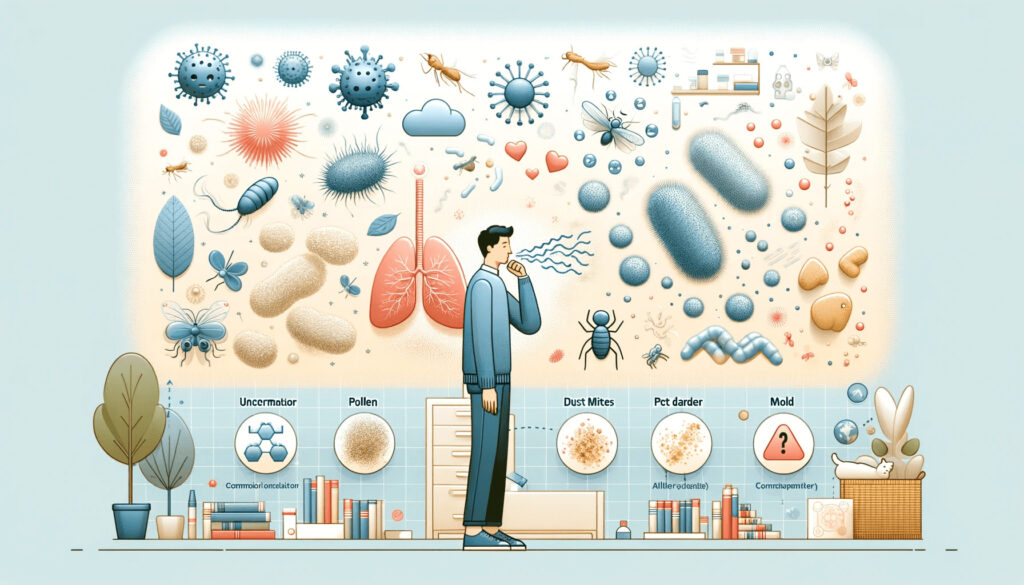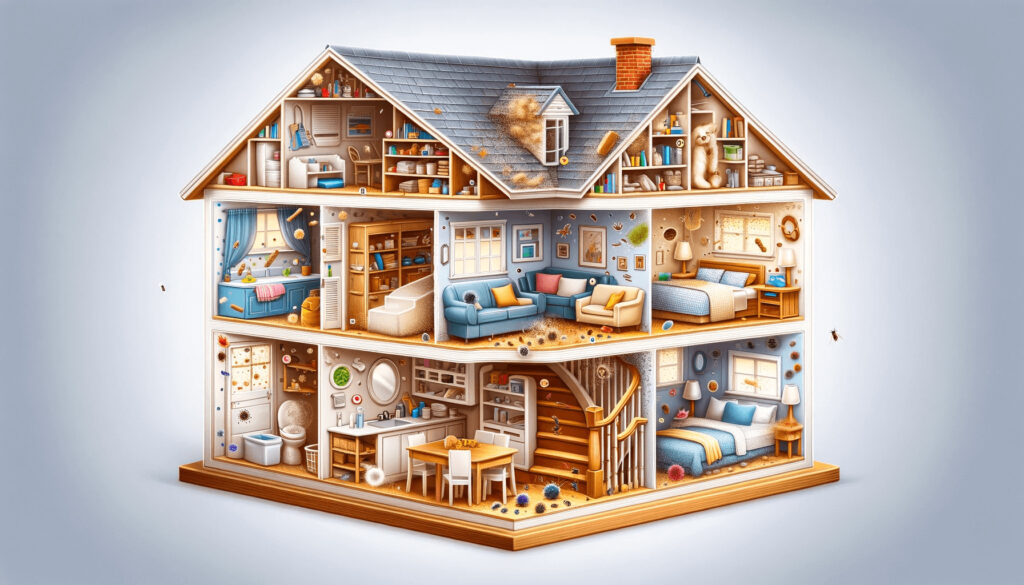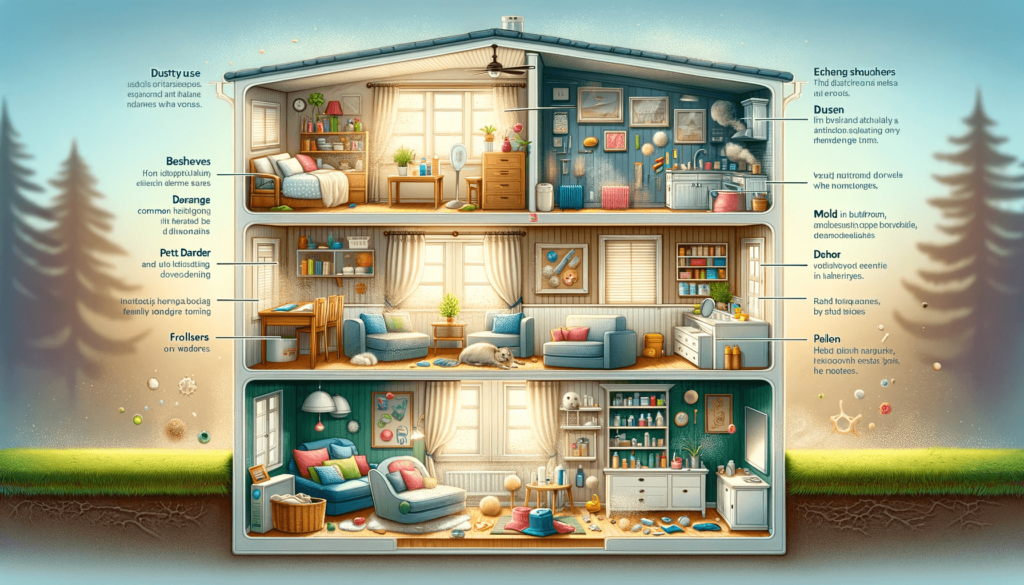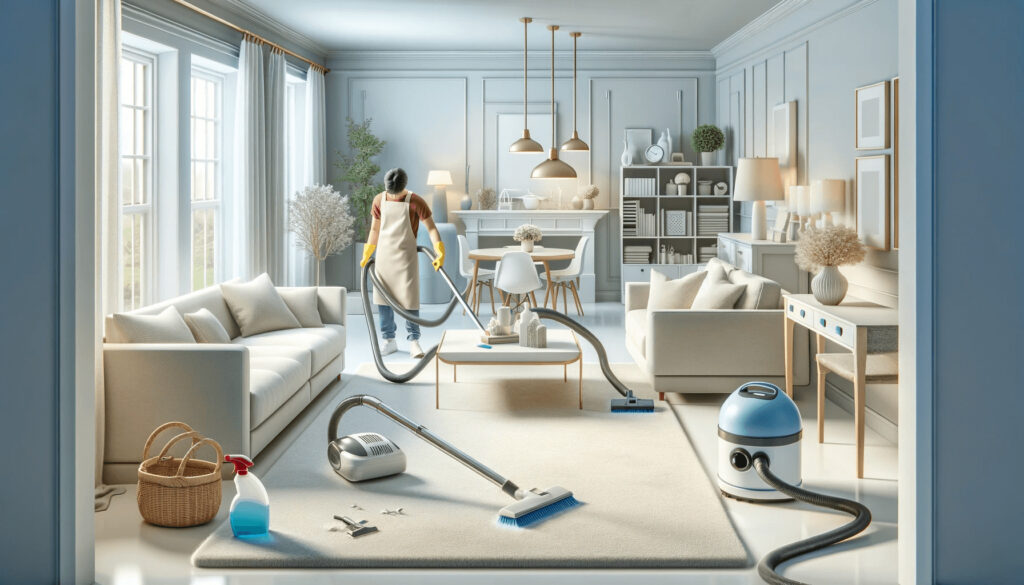In 2024, where we have the power to allergy-proof our homes and bid farewell to those pesky sneezes and sniffles! If you’re tired of constantly battling against allergens in your own living space, then this comprehensive cleaning guide is exactly what you need. We’ll dive deep into understanding allergies and their causes, explore the impact […]

In 2024, where we have the power to allergy-proof our homes and bid farewell to those pesky sneezes and sniffles! If you’re tired of constantly battling against allergens in your own living space, then this comprehensive cleaning guide is exactly what you need.
We’ll dive deep into understanding allergies and their causes, explore the impact of allergens on our homes, identify common culprits that lurk within our walls, and provide you with effective strategies for creating an allergy-proof sanctuary. So grab a feather duster (or maybe not!) as we embark on a journey towards a healthier home environment.
Let’s banish those allergies once and for all!
Allergies, those sneaky saboteurs of our well-being, can turn even the most picturesque spring day into a battlefield of runny noses and itchy eyes. But what exactly are allergies, and why do they seem to have a personal vendetta against us?

At their core, allergies are an overreaction of our immune system to substances that are usually harmless. These substances, known as allergens, trigger an immune response in sensitive individuals. The body perceives these allergens as invaders and releases chemicals like histamine to defend itself. But what causes some people’s immune systems to go haywire when faced with otherwise harmless substances? Well, blame it on genetics! Yes, you heard right – your family tree might be partly responsible for your allergic woes. If one or both of your parents suffer from allergies, there is an increased likelihood that you will too.
Environmental factors also play a role in the development of allergies. Exposure to certain allergens during early childhood can increase the risk of developing sensitivities later in life. Additionally, pollution levels and lifestyle choices such as smoking can worsen allergy symptoms.Now that we have a basic understanding of what triggers our bodies’ allergy alarms let’s dive deeper into how these pesky intruders infiltrate our homes and wreak havoc on our health. Stay tuned for the next section where we explore the impact of allergens within our living spaces!

Our homes are supposed to be our safe havens, a place where we can relax and feel protected from the outside world. However, for many people suffering from allergies, their homes can actually be a breeding ground for allergens that cause discomfort and distress. Allergens are substances that trigger allergic reactions in individuals who are sensitive to them. These reactions can range from mild symptoms like sneezing and coughing to more severe ones such as asthma attacks or skin rashes. The impact of allergens on our health cannot be underestimated.
One common source of indoor allergens is dust mites. These microscopic creatures thrive in warm, humid environments and feed on dead skin cells shed by humans and pets. Their droppings contain proteins that can trigger allergic reactions in susceptible individuals. Another culprit is pet dander – tiny flecks of skin shed by cats, dogs, birds, or other animals with fur or feathers. Even if you don’t have a pet yourself, these allergenic particles can easily find their way into your home through clothing or visitors who own pets. Mould is yet another concern when it comes to indoor allergies. It thrives in damp areas like bathrooms or basements and releases spores that become airborne and cause respiratory issues for those sensitive to them. Other potential sources of indoor allergens include pollen brought indoors on shoes or clothing during allergy season, cigarette smoke residue lingering on surfaces long after smoking has stopped, as well as certain chemicals found in cleaning products or air fresheners.
Living with constant exposure to these allergens can lead to chronic symptoms that affect not only physical health but also mental well-being. Constant sneezing fits or difficulty breathing can disrupt sleep patterns and leave us feeling exhausted during the day.
In addition to the immediate discomfort they cause, untreated allergies may also increase the risk of developing other conditions such as sinus infections or eczema over time. It’s essential to take proactive steps to reduce allergens in our homes
Our homes are supposed to be our sanctuaries, a place where we can relax and feel safe. However, for many allergy sufferers, the home can become a minefield of triggers that cause sneezing fits, itchy eyes, and congestion. To create an allergy-proof home, it’s crucial to identify and eliminate common allergens lurking in your living space. One of the most notorious culprits is dust mites. These microscopic creatures thrive in bedding, upholstered furniture, and carpeting. Pet dander is another common allergen that can circulate throughout your home via air vents or cling to clothing and shoes.
Mould spores are yet another hidden enemy that may be present in damp areas like bathrooms or basements. Pollen from outdoor plants can also find its way indoors through open windows or on the soles of shoes. To pinpoint these allergens in your home, consider investing in an air quality monitor or consult with an allergist who can perform tests to determine specific triggers. Regular cleaning routines should focus on vacuuming carpets using a HEPA filter vacuum cleaner and washing bedding at high temperatures to eliminate dust mites. Keeping pets out of bedrooms and frequently brushing them outside will help reduce pet dander levels inside your home. Ensure proper ventilation by utilizing exhaust fans when showering or cooking to minimize moisture buildup that encourages mould growth. Regularly wiping down surfaces with microfiber cloths will help trap dust instead of spreading it around. Consider using hypoallergenic covers for mattresses and pillows as an extra barrier against allergens.
Remember that prevention is key when it comes to reducing allergies at home. By identifying common allergens lingering within your living space and taking appropriate measures to control their presence, you’ll be well on your way towards creating an environment where you can breathe freely without worrying about pesky allergic reactions interrupting your daily life.

Keeping your home clean is an essential step in creating an allergy-proof environment. Dust mites, pet dander, pollen, and mould are just a few of the common culprits that can trigger allergies. By implementing effective cleaning strategies, you can minimize allergens and create a healthier living space.
Start with regular dusting using a damp cloth or electrostatic duster to capture dust particles instead of scattering them into the air. Vacuum carpets and upholstery frequently using a vacuum cleaner equipped with a HEPA filter to trap tiny allergen particles effectively. Don’t forget about your bedding! Wash sheets, pillowcases, and blankets weekly in hot water to eliminate dust mites. Encase mattresses and pillows in hypoallergenic covers to prevent allergens from settling inside. Pay special attention to high-moisture areas like bathrooms and kitchens where mould thrives. Clean surfaces regularly with natural anti-bacterial solutions like vinegar or hydrogen peroxide to keep mould at bay. Minimize clutter as it tends to collect dust and make cleaning more challenging. Opt for easy-to-clean materials such as hardwood floors rather than carpeting which can harbor allergens. Avoid using harsh chemical cleaners that may aggravate respiratory allergies. Instead, opt for natural alternatives like baking soda or lemon juice mixed with water for general cleaning purposes. Remember to clean air filters in heating/cooling systems regularly as they can become breeding grounds for allergens if not maintained properly.
By following these simple yet effective cleaning strategies, you can significantly reduce the presence of allergens in your home and create an environment that promotes better health for everyone who lives there.

When it comes to allergy-proofing your home, there are plenty of natural remedies that can help reduce allergens and create a healthier environment for you and your family. Here are some simple yet effective ways to tackle those pesky allergens without resorting to harsh chemicals.
Let’s talk about ventilation. Opening windows and doors on a regular basis allows fresh air to circulate throughout your home, helping to remove stagnant air that may be filled with allergens. Additionally, investing in an air purifier with a HEPA filter can help capture airborne particles such as dust mites, pollen, and pet dander.
Next up is cleaning. Dusting and vacuuming regularly can make a significant difference in reducing allergen levels in your home. Use microfiber cloths for dusting as they trap more particles compared to traditional feather dusters. Opt for vacuum cleaners equipped with HEPA filters to effectively collect tiny allergenic particles from carpets and upholstery. Another natural way to combat allergies is by using essential oils known for their antihistamine properties. Lavender oil has been shown to have anti-inflammatory effects on mucous membranes while peppermint oil acts as a decongestant and helps clear nasal passages. In addition, keeping humidity levels low is crucial as mold thrives in damp environments which can trigger allergic reactions. Use dehumidifiers or invest in moisture-absorbing materials like silica gel packs or bamboo charcoal bags placed strategically around the house.
Don’t forget about your furry friends! Regular grooming of pets can significantly reduce pet dander – one of the most common triggers of allergies. Brush them outdoors when possible or use specially designed wipes made specifically for removing loose fur and dander from their coats. By implementing these natural methods into your cleaning routine, you’ll be well on your way toward creating an allergy-friendly haven within the walls of your home.
When it comes to your bedroom, creating an allergy-free environment is essential for a restful night’s sleep. Dust mites, pet dander, and pollen can easily find their way into this space, triggering allergies and affecting your overall well-being. But fear not! With a few simple steps, you can transform your bedroom into a haven of clean air.
Start with the basics – invest in hypoallergenic bedding made from materials such as cotton or bamboo. These fabrics are less likely to harbor allergens and are easier to wash frequently. Don’t forget about your pillows! Opt for hypoallergenic pillow covers and regularly fluff them in the dryer on high heat to eliminate dust mites. Next, tackle the flooring. If possible, remove any carpets or rugs that may trap allergens. Instead, choose hardwood or laminate floors which are easier to keep clean by simply sweeping or mopping regularly. Additionally, consider using an air purifier in your bedroom. This device filters out airborne particles like pollen and pet dander while also providing white noise for a more peaceful sleep environment. Lastly (but certainly not least), keep pets out of the bedroom. Even if you’re not allergic to animals themselves, their fur can carry allergens from outside into your sleeping sanctuary.
By implementing these strategies in creating an allergy-free bedroom space tailored specifically to your needs; you’ll be able to enjoy uninterrupted slumber without having pesky allergies interfere with your much-needed rest.

1. Regular Cleaning: The key to keeping allergens at bay is to maintain a regular cleaning routine. Vacuum carpets, rugs, and upholstery regularly use a HEPA filter vacuum cleaner to trap dust mites, pollen, and pet dander effectively. Dust surfaces with a damp cloth instead of dry dusting to prevent particles from becoming airborne.
2. Air Purification: Invest in an air purifier with a HEPA filter for your home. This can help remove allergens such as pollen, mold spores, and pet dander from the air you breathe. Place it in commonly used areas like the living room or bedroom for maximum effectiveness.
3. Proper Ventilation: Good ventilation is essential for reducing indoor allergens. Open windows when weather permits to allow fresh outdoor air inside your home and improve circulation. Use exhaust fans in bathrooms during showers or while cooking to remove excess moisture that can lead to mold growth.
4. Wash Bedding Frequently: Bedding collects allergens like dust mites and their waste products over time. Wash sheets, pillowcases, blankets, and mattress covers regularly in hot water (at least 130°F) to kill these microscopic creatures.
5. Improve Indoor Humidity Levels: Maintaining optimal humidity levels (between 30% – 50%) helps control mold growth which can trigger allergies. A dehumidifier can help reduce excess moisture in damp areas like basements or bathrooms while a humidifier adds moisture during dry winter months.
6. Pet Care: If you have pets that shed hair or dander frequently ensure regular grooming sessions, daily brushing, and bathing if necessary. Regularly clean the bedding, and furniture they use, and restrict them from entering bedrooms if possible.
7. Allergen-Free Fabrics: Certain fabric materials are more prone than others to harboring allergens. Opt for hypoallergenic bedding, pillows, and mattress covers. Use dust-mite-proof pillows and mattress encasements to prevent.
In today’s fast-paced world, allergies have become increasingly common and can greatly impact our daily lives. From sneezing fits to itchy eyes, allergies can be a real nuisance. However, by taking proactive steps to allergy-proof your home, you can create a safe and comfortable environment for yourself and your loved ones.
Understanding the causes of allergies is crucial in mitigating their effects. Whether it’s pollen from outside or dust mites lurking in our homes, being aware of these allergens allows us to take targeted measures to combat them.
![]()